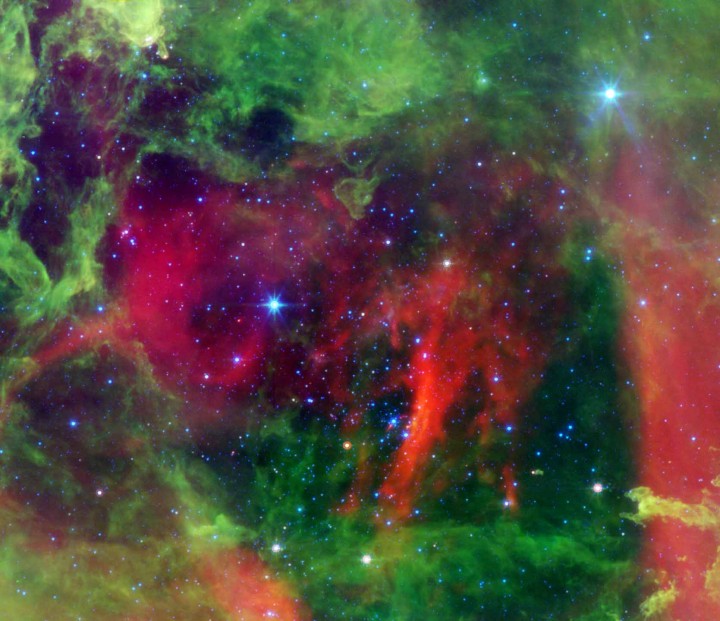Explanation: Winds and radiation from massive hot stars in the Rosette Nebula have cleared the natal gas and dust from the center of the nearby star-forming region. They also pose a danger to planet forming disks around young, cooler stars in the neighborhood. This Spitzer Space Telescope infrared image of dust clouds near the Rosette's central region, shows the cleared-out cavity. The view spans about 45 light-years at the the nebula's estimated distance of 5,200 light-years. Putting your cursor over the false color picture will highlight the dangerous hot stars, classified as O stars with surface temperatures of 25,000 kelvins or higher. Astronomers calculate that cool stars wandering within about 1.6 light-years of the Rosette's O stars are in danger of having their planet forming disks destroyed.
1999 2000 2001 2002 2003 2004 2005 2006 2007 2008 2009 2010 2011 2012 2013 2014 2015 2016 2017 2018 2019 2020 2021 2022 2023 2024 2025 |
Yanvar' Fevral' Mart Aprel' Mai Iyun' Iyul' Avgust Sentyabr' Oktyabr' Noyabr' Dekabr' |
NASA Web Site Statements, Warnings, and Disclaimers
NASA Official: Jay Norris. Specific rights apply.
A service of: LHEA at NASA / GSFC
& Michigan Tech. U.
|
Publikacii s klyuchevymi slovami:
star formation - NGC 2244 - Rosette Nebula - Tumannost' Rozetka - zvezdoobrazovanie
Publikacii so slovami: star formation - NGC 2244 - Rosette Nebula - Tumannost' Rozetka - zvezdoobrazovanie | |
Sm. takzhe:
Vse publikacii na tu zhe temu >> | |
